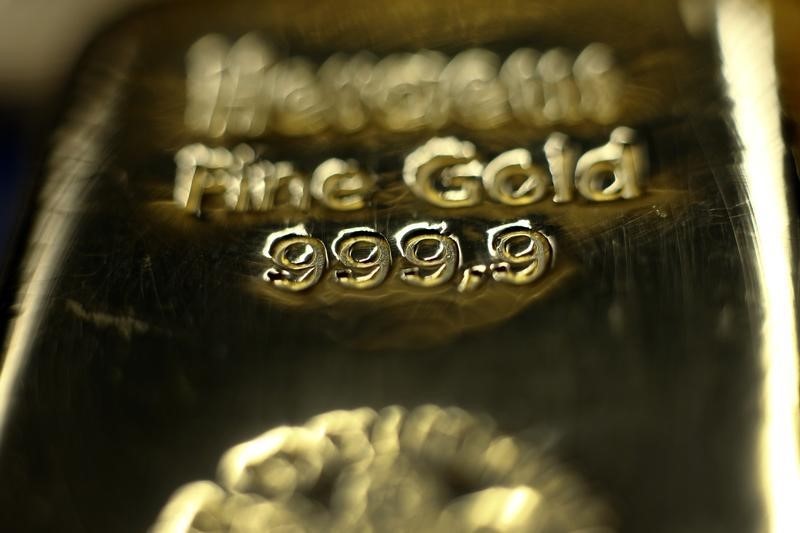Investing.com - Gold futures fell to the lowest level in more than three weeks on Wednesday, as a broadly stronger U.S. dollar and rallying global equity markets reduced the appeal of the precious metal.
Gold for December delivery on the Comex division of the New York Mercantile Exchange hit an intraday low of $1,110.70 a troy ounce, the weakest level since August 18, before trading at $1,112.30 during U.S. morning hours, down $8.70, or 0.78%. A day earlier, gold lost 40 cents, or 0.04%.
The U.S. dollar pushed higher against the other major currencies on Wednesday, amid hopes for further stimulus from China and Japan.
The Shanghai Composite tacked on 2.3%, one day after posting a late rally to end up 3%, after China's finance ministry proposed a series of fresh measures to stimulate economic growth.
Hopes for more stimulus measures from the Chinese government increased after data on Tuesday showed that China's imports shrank far more than expected in August, falling for the 10th straight month.
Meanwhile, Japan's blue-chip Nikkei stock index soared 7.7%, the biggest one-day gain since October 2008, after Prime Minister Shinzo Abe reiterated a pledge to lower the corporate tax rate.
The upbeat sentiment carried over to European markets, where Germany's DAX, France’s CAC 40 and London's FTSE 100 were all up almost 2% in afternoon trade.
Elsewhere, Wall Street posted strong gains after the open, with the Dow rising nearly 200 points to join a global equity rally.
Gold also struggled amid ongoing uncertainty about whether the Federal Reserve will increase interest rates later this month when it meets on September 16-17.
Last week's U.S. jobs report failed to provide much clarity on when the U.S. central bank will decide to raise short term interest rates. The timing of a Fed rate hike has been a constant source of debate in the markets in recent months.
Gold fell to a five-and-a-half year low of $1,072.30 on July 24 amid speculation the Fed will raise interest rates in September for the first time since 2006.
Expectations of higher borrowing rates going forward is considered bearish for gold, as the precious metal struggles to compete with yield-bearing assets when rates are on the rise.
Elsewhere in metals trading, copper for December delivery on the Comex division of the New York Mercantile Exchange rose 2.2 cents, or 0.91%, to trade at a seven-week high of $2.457 a pound.
Copper's gains came amid indications of steady demand from China and news of global production cuts.
Data on Tuesday showed that China’s copper arrivals in August totaled 350,000 metric tons, little changed from a month earlier, indicating that demand for the red metal held up despite recent market turmoil.
The Asian nation is the world’s largest copper consumer, accounting for almost 40% of world consumption last year.
Copper is up almost 6% this week after Swiss-based mining giant Glencore (LONDON:GLEN) said Monday that it was suspending operations at two copper mines for 18 months in a bid to lower operating costs.
The Katanga and Mopani mines are located in the Democratic Republic of the Congo and Zambia, respectively, and their suspensions will remove about 400,000 tonnes of copper from the market.
